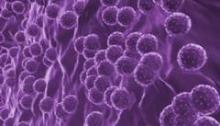The era of interferon and ribavirin in the treatment of hepatitis C viral infections appears to be drawing to a close, and few clinicians will mourn the passing of the effective but highly toxic combination, investigators said at the Conference on Retroviruses and Opportunistic Infections.
In patients with hepatitis C virus infection alone or HCV with HIV coinfection, a host of new interferon-free drugs and new combinations are transforming therapy, reported Dr. Jean-Michel Pawlotsky, professor of medicine at the University of Paris-Est.
"Hepatitis C is living a real therapeutic revolution. Everything is changing very fast. We’re now getting infection cure rates higher than 90% with the classes of drugs we have," he said at a briefing.
STARTVerso4
With all of the drugs, the sustained virologic response (SVR) rates "are exactly the same in coinfected patients as they are in monoinfected patients," said Dr. Douglas Dieterich of Mt. Sinai Medical Center, New York.
For example, a combination of the protease inhibitor faldaprevir with pegylated interferon alfa-2a plus ribavirin (PR) produced SVR rates at week 4 of follow-up (SVR4) of 74% in HCV/HIV coinfected patients, said Dr. Dietrich, a principal investigator for the STARTVerso4 trial.
In this phase III open-label trial, 308 patients with HCV/HIV coinfection who were treatment naive or relapsed after prior interferon-based therapy were randomly assigned to receive faldaprevir 120 mg daily for 24 weeks or 240 mg for 12 or 24 weeks according to on-treatment response. In both arms, faldaprevir was given on a PR backbone, with duration guided by response to therapy.
For the primary endpoint of SVR12, the investigators saw a 72% rate, with no significant difference between the two dose groups, compared with approximately 80% in monoinfected patients in other phase III studies. There was also no difference in efficacy between patients with or without cirrhosis, he said.
Adverse events included mild hyperbilirubinemia in some patients and interferon side effects.
Simeprevir in coinfection
Dr. Dietrich was also the lead on study C212, which looked at simeprevir (Olysio) on a PR backbone in coinfected patients. The results were similar to those seen with faldaprevir (73.6% overall SVR12).
Interestingly, the presence of the simeprevir-resistant q80K polymorphism did not make a difference in response rates, he said. Among monoinfected patients in prior studies, those with q80k polymorphism had significantly lower SVR rates. The adverse events were also similar to those seen in patients with monoinfection.
PHOTON-1
The PHOTON-1 trial evaluated the first interferon-free regimen (sofosbuvir plus ribavirin) in patients with HCV genotypes 1-3 and HIV.
In this study, patients with HCV and stable HIV infection received sofosbuvir 400 mg and ribavirin 1,000-1,200 mg daily. Treatment-naive patients with HCV genotype 1 and treatment-experienced patients with genotypes 2 or 3 received treatment for 24 weeks, while treatment-naive genotype 2/3 patients received 12 weeks of treatment. Patients on multiple antiretroviral (ART) regimens and those with compensated cirrhosis were included in the study.
The primary efficacy endpoint, SVR12, was achieved in 88% of treatment-naive genotype 2 patients and 67% of genotype 3 patients. In genotype 1 patients, the SVR was approximately 70%, Dr. Dietrich said.
Adverse events were general and limited to anemias, headache, and other symptoms commonly seen with HCV therapies, he added.
SYNERGY trial
Dr. Anita Kohli presented final results from the SYNERGY trial, which looked at combination oral HCV therapy for 6 or 12 weeks (SVR4 results from this trial were presented at the 2013 Liver Meeting).
In this phase II prospective cohort study, 60 treatment-naive patients with HCV genotype 1 were enrolled into one of three arms to receive either sofosbuvir 400 mg with ledipasvir 90 mg once daily in a fixed-dose combination for 12 weeks (arm A); the same fixed-dose combination plus the non-nucleoside NS5B inhibitor GS-9669 500 mg/day for 6 weeks (arm B); or the fixed-dose combination plus the NS3 protease inhibitor GS-9451 80 mg/day for 6 weeks.
The SVR12 rate among the patients on sofosbuvir/ledipasvir alone (arm A) was 100%, the rate in arm B was 95%, and the rate in arm C was 100%.
"We find these results very promising," said Dr. Kohli of the National Institutes of Health.
She noted that all patients in the trial were treatment naïve, and that all stages of liver disease were included in the 12-week treatment arm, but cirrhotic patients were excluded from the 6-week arms.


